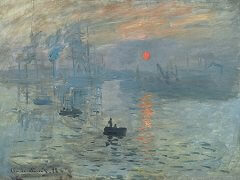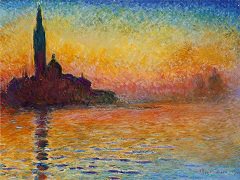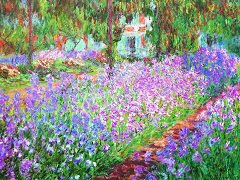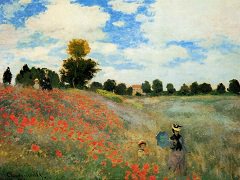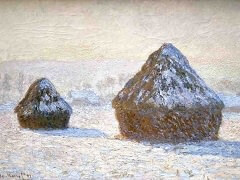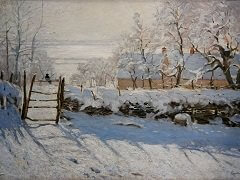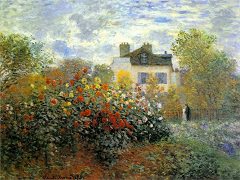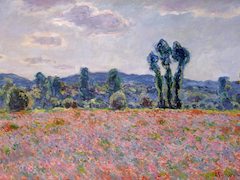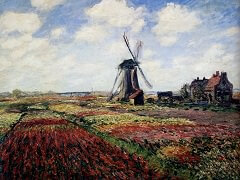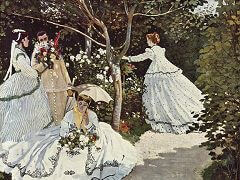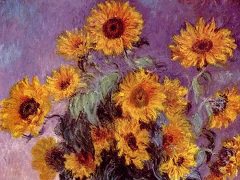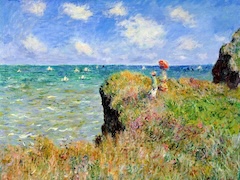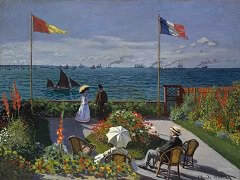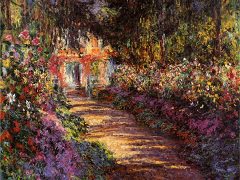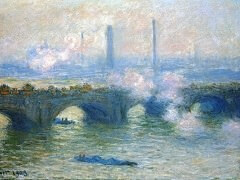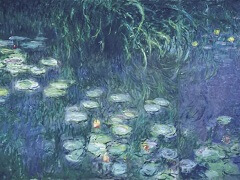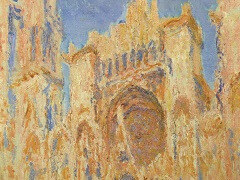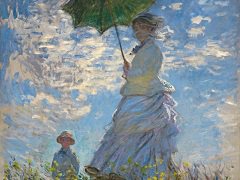Tulip Field, near the Hague, 1886 by Claude Monet
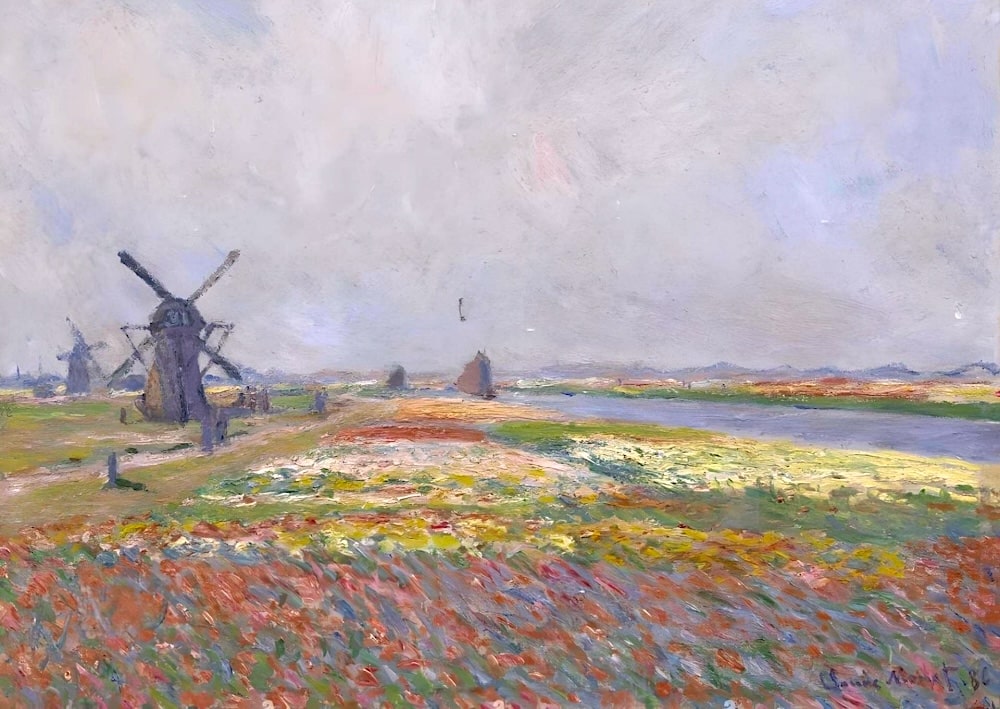
Monet was inspired by the flatness of Holland when he visited the country in 1871. This picture emphasizes that flatness by the equal split between land and sky. The windmill helps break up the never-ending horizon and gives a perspective to the view.
It was not just the flat landscape that inspired Monet; he was animated by the colors he saw as well. This is evident in the quick brushwork that switches from color to color. Such chaos of color is echoed in Water Lily Pond, Water Irises, where contrasting colors are painted on the canvas side by side. The result in both works is an explosion of color that floods the viewer's senses. So inspired by the color was Monet that he did not feel it necessary to give the flowers form. Their color is their essence so it was sufficient to represent them by a patch of red or purple. This is especially noticeable in Tulip Field, near the Hague, where the scope of a view does not require a detailed rendition of a flower as if viewed from up close.

